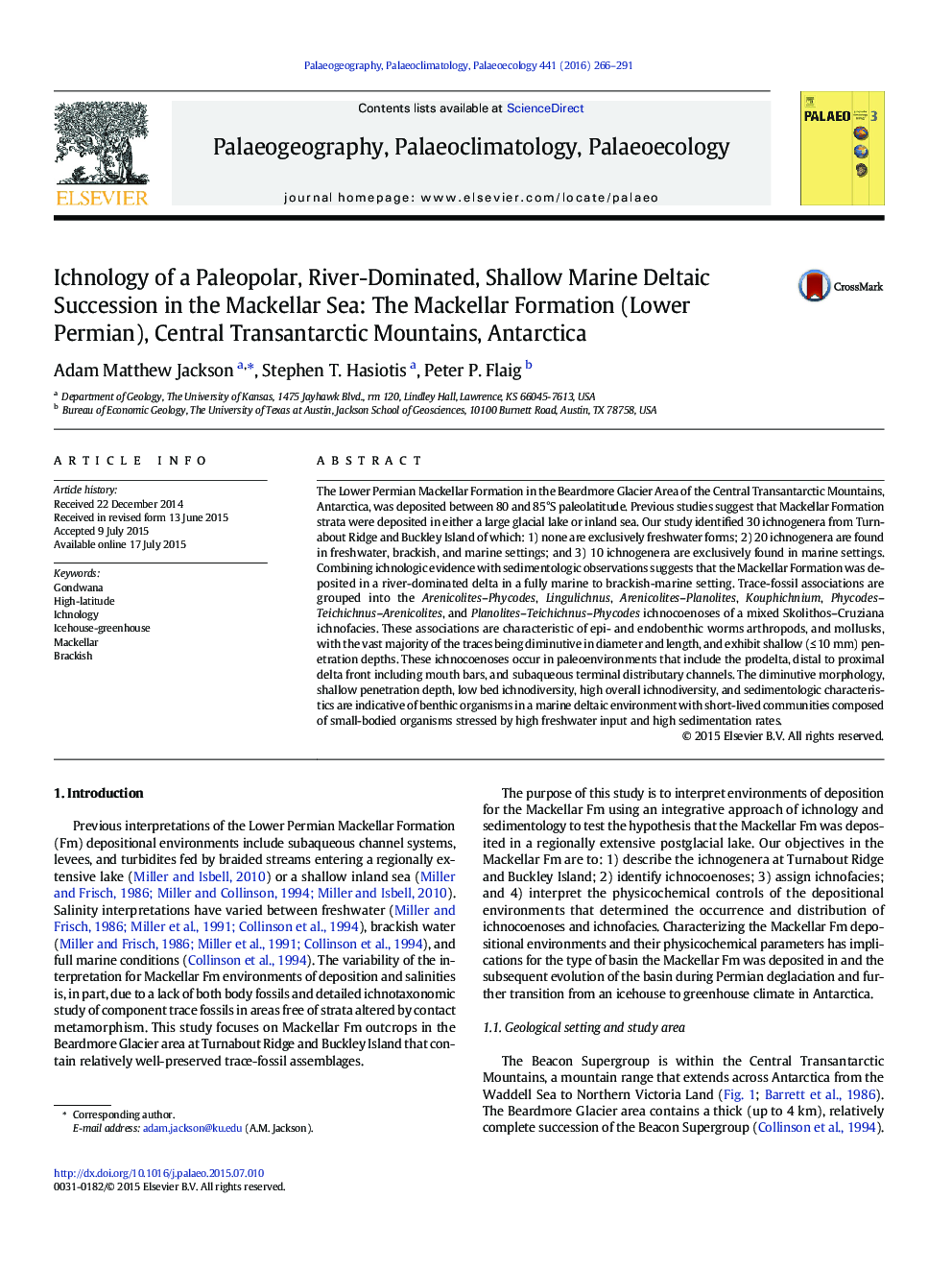| کد مقاله | کد نشریه | سال انتشار | مقاله انگلیسی | نسخه تمام متن |
|---|---|---|---|---|
| 4465822 | 1313950 | 2016 | 26 صفحه PDF | دانلود رایگان |

• Permian Mackellar Formation deposited in river-dominated marine deltaic environment
• Ichnology indicates a freshwater-stressed marine environment.
• Trace fossils have diminutive dimensions and shallow sediment penetration.
• Individual bed ichnodiversity is low, with high formational ichnodiversity.
• Of 30 ichnogenera identified, none are found exclusively in freshwater environments.
The Lower Permian Mackellar Formation in the Beardmore Glacier Area of the Central Transantarctic Mountains, Antarctica, was deposited between 80 and 85°S paleolatitude. Previous studies suggest that Mackellar Formation strata were deposited in either a large glacial lake or inland sea. Our study identified 30 ichnogenera from Turnabout Ridge and Buckley Island of which: 1) none are exclusively freshwater forms; 2) 20 ichnogenera are found in freshwater, brackish, and marine settings; and 3) 10 ichnogenera are exclusively found in marine settings. Combining ichnologic evidence with sedimentologic observations suggests that the Mackellar Formation was deposited in a river-dominated delta in a fully marine to brackish-marine setting. Trace-fossil associations are grouped into the Arenicolites–Phycodes, Lingulichnus, Arenicolites–Planolites, Kouphichnium, Phycodes–Teichichnus–Arenicolites, and Planolites–Teichichnus–Phycodes ichnocoenoses of a mixed Skolithos–Cruziana ichnofacies. These associations are characteristic of epi- and endobenthic worms arthropods, and mollusks, with the vast majority of the traces being diminutive in diameter and length, and exhibit shallow (≤ 10 mm) penetration depths. These ichnocoenoses occur in paleoenvironments that include the prodelta, distal to proximal delta front including mouth bars, and subaqueous terminal distributary channels. The diminutive morphology, shallow penetration depth, low bed ichnodiversity, high overall ichnodiversity, and sedimentologic characteristics are indicative of benthic organisms in a marine deltaic environment with short-lived communities composed of small-bodied organisms stressed by high freshwater input and high sedimentation rates.
Journal: Palaeogeography, Palaeoclimatology, Palaeoecology - Volume 441, Part 2, 1 January 2016, Pages 266–291